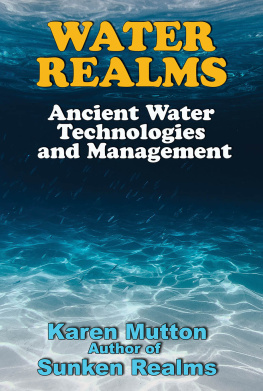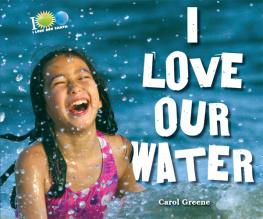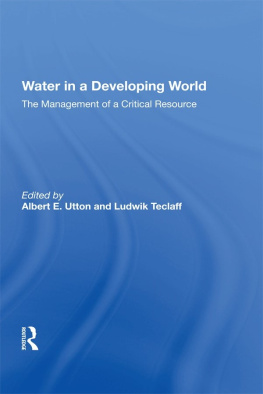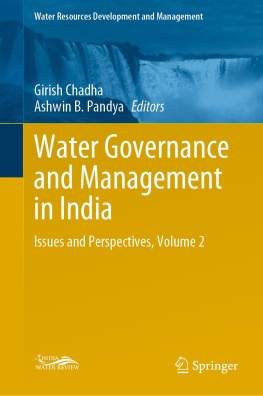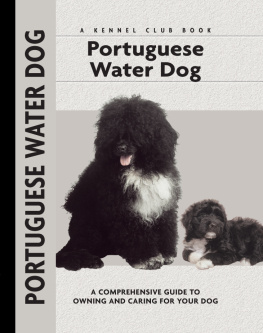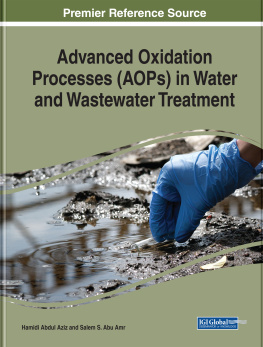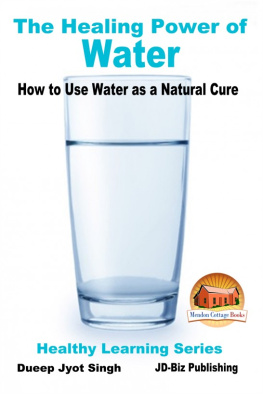KAREN MUTTON - WATER REALMS ancient water technologies and management.
Here you can read online KAREN MUTTON - WATER REALMS ancient water technologies and management. full text of the book (entire story) in english for free. Download pdf and epub, get meaning, cover and reviews about this ebook. City: S.l., year: 2021, publisher: ADVENTURES UNLIMITED PRES, genre: Non-fiction. Description of the work, (preface) as well as reviews are available. Best literature library LitArk.com created for fans of good reading and offers a wide selection of genres:
Romance novel
Science fiction
Adventure
Detective
Science
History
Home and family
Prose
Art
Politics
Computer
Non-fiction
Religion
Business
Children
Humor
Choose a favorite category and find really read worthwhile books. Enjoy immersion in the world of imagination, feel the emotions of the characters or learn something new for yourself, make an fascinating discovery.
- Book:WATER REALMS ancient water technologies and management.
- Author:
- Publisher:ADVENTURES UNLIMITED PRES
- Genre:
- Year:2021
- City:S.l.
- Rating:3 / 5
- Favourites:Add to favourites
- Your mark:
- 60
- 1
- 2
- 3
- 4
- 5
WATER REALMS ancient water technologies and management.: summary, description and annotation
We offer to read an annotation, description, summary or preface (depends on what the author of the book "WATER REALMS ancient water technologies and management." wrote himself). If you haven't found the necessary information about the book — write in the comments, we will try to find it.
KAREN MUTTON: author's other books
Who wrote WATER REALMS ancient water technologies and management.? Find out the surname, the name of the author of the book and a list of all author's works by series.
WATER REALMS ancient water technologies and management. — read online for free the complete book (whole text) full work
Below is the text of the book, divided by pages. System saving the place of the last page read, allows you to conveniently read the book "WATER REALMS ancient water technologies and management." online for free, without having to search again every time where you left off. Put a bookmark, and you can go to the page where you finished reading at any time.
Font size:
Interval:
Bookmark:
WATER
REALMS
Ancient Water
Technologies and
Management
Karen Mutton

Hidden Realms
Copyright 2021
by Karen Mutton
All Rights Reserved
ISBN: 978-1-948803-33-5
Published by:
Adventures Unlimited Press
One Adventure Place
Kempton, Illinois 60946 USA
Printed in the United States of America
AdventuresUnlimitedPress.com
WATER REALMS
Ancient Water
Technologies and
Management
Karen Mutton
Other books by Karen Mutton:
SUNKEN REALMS
SUBTERRANEAN REALMS
SCATTERED SKELETONS IN OUR CLOSET
Other books of interest:
VIMANA
ARK OF GOD
BIGFOOT NATION
GIANTS ON RECORD
THINGS AND MORE THINGS
INVISIBLE RESIDENTS
ANCIENT TECHNOLOGY IN PERU & BOLIVIA
THE MYSTERY OF THE OLMECS
PIRATES AND THE LOST TEMPLAR FLEET
TECHNOLOGY OF THE GODS
THE ENIGMA OF CRANIAL DEFORMATION
ANCIENT ALIENS AND SECRET SOCIETIES
THE CRYSTAL SKULLS
ANCIENT ALIENS ON THE MOON
ANCIENT ALIENS ON MARS
ANCIENT ALIENS ON MARS II
ANCIENT ALIENS AND JFK
HIDDEN AGENDA
CONTENTS
INTRODUCTION
This book covers a vast amount of information about ancient hydraulic technologies which has been previously confined to the dry pages of academic journals. In this age of increasing population pressures upon finite water supplies, some of the ingenious technologies employed by the ancients across the globe need to be re-examined and utilised. Since the dawn of civilisation in Mesopotamia, Egypt, the Indus Valley, the Americas, China and Greece, towns and cities have implemented water management technologies for sanitation, irrigation and industrial purposes. Sanitation is defined as instituting measures to promote health and eliminating disease, particularly by:
The provision of clean potable water.
The elimination of wastewater and sewage.
1. Technologies for providing drinking and bathing water include:
Wells, cisterns, tanks, dams, settlement tanks, reservoirs, fountains and baths
Sophisticated pipelines attached to aqueducts, cisterns and canals
Complex hydraulic systems such as Roman aqueducts, Persian qanats and Peruvian puquios
Tunnel systems in ancient Jerusalem and Samos, Greece
Many of these structures still survive, such as:
Ancient dams in Egypt, Spain and Japan
Aqueducts across the Roman world, the most famous being Segovia, Spain and Pont du Gard in France, as well as scores more in Italy, Turkey and North Africa.
Greco-Roman fountains in Tivoli, Sagalassoa
Sacred wells in Sardinia and across ancient Britain
Integrated water capture and storage systems in Petra, Jordan
Tunnels dug through solid rock in Israel at Hazor, Meggido and Jerusalem
Baths at Mohenjo-daro in the Indus Valley and the great Roman thermae such as the Baths of Caracalla and the British town of Bath
The puquios underground aqueduct system in the Nazca desert
Persian qanats, including tunnels and wells built across the Middle East, Central Asia and North Africa
2. The elimination of wastewater and sewage was practised in Crete, Greece, Rome, the Indus Valley, China and various South American cultures via latrines, drains and separate pipelines leading to rivers or cesspools. Recycling of wastewater for irrigation purposes was well developed in the 2nd millennium from Crete to China using drains, pipelines and culverts.
Sophisticated drainage at Knossos, Crete and Indus Valley cities
The Cloaca Maxima drain built by the Etruscans in Rome
The Great Drain of Athens
Teotihuacan in Mexico had extensive canals and drainage
3. Irrigation projects for crops were completed before historical records were kept in Mesopotamia, Egypt, Greece and China. These impressive projects included the draining of lakes, diversion of rivers, dams, reservoirs and the construction of weirs, sluices as well as extensive canal systems.
Examples of huge reclamation projects include the draining of Lake Kopas in Greece and the Dujiangyan project in China.
Canals in Babylon and The Great Canal, China
Grand gardens in ancient Persia, Egypt and Mesopotamia, such as the Hanging Gardens of Babylon have not survived, although some ancient gardens in Japan still exist.
4. Sophisticated hydraulic civilisations in South East Asian countries such as Sri Lanka and Cambodia flourished in early historical times.
Sri Lanka has some of the most extensive hydraulic projects in the world, dating to over 2,000 years ago.
The Khmer Kingdom in Cambodia had extensive works around Angkor.
Aquaculture, the cultivation of fish and eels for food by building ponds and walls was practised for millennia in southern Australia, as well as China, Egypt, Rome and Hawaii. These projects include:
Extensive fish ponds in Hawaii
The eel traps of Brewarrina, in southern Australia
5. In ancient Greece, Rome, the Middle East and China water wheels were employed to mill grain, pump water and for other purposes.
These include overshot, undershot and central water wheels
Ancient gravity fed pumps perfected by the Hellenistic Greeks include the Archimedes Screw, the siphon and the inverted siphon.
The Minoans and Romans used heated water. The Romans heated water with the hypocaust system of underfloor heating.
From these examples, as well as many more described in Water Realms, it is apparent that the ancients on all inhabited continents invented technologies to locate, collect, store, transport and/or utilise water, often on a grand scale. Their tenacity and ingenuity deserves our admiration. Their achievements deserve to be shared with the world.
TABLES
Measurements provided in this book are either in imperial or metric depending on the original source. To find the equivalent, use the following table:
1 inch = 2.54 centimetres
1 foot = 0.30 metre
1 yard = 0.91 metre
1 mile = 1.69 kilometres
1 acre = 0.40 hectares
1 square mile = 2.59 square kilometres
1 metre = 0.062 miles
1 kilometres = 0.62 miles
1 hectare = 0.00386 square miles
GLOSSARY
ADIT- a horizontal passage leading to a mine for access or drainage
AQUEDUCT- an artificial channel for conveying water, typically as a bridge across a valley or gap
ARCHIMEDES SCREW- an ancient pump used for transferring water from low-lying water to irrigation ditches
BARAY- an artificial body of water in the Khmer empire of Cambodia
CALYX- bronze connector which regulated water use in Roman towns
CANAL- artificial waterway to convey water for irrigation or passage of boats
CASTELLUM DIVISORIUM- a Roman structure that was situated at the end of an aqueduct, where the water was delivered to a basin and then dispersed.
CENOTE- natural underground reservoir of water in the Yucatan
CHAHA BARG- quadrilateral park layout in ancient Persia
CHAIN PUMP- a water pump in which circular discs are positioned on an endless chain, often used in Roman mines
CHULTAN- Mayan underground chamber or cistern
CISTERN tank for storing water
COMMUNICATING VESSELS- the surface of a liquid is horizontal when several vessels are connected.
CULVERT- a tunnel carrying a stream or open drain beneath a road
EMISSARY- channel, natural or artificial, by which an outlet is formed to carry off any stagnant body of water
Next pageFont size:
Interval:
Bookmark:
Similar books «WATER REALMS ancient water technologies and management.»
Look at similar books to WATER REALMS ancient water technologies and management.. We have selected literature similar in name and meaning in the hope of providing readers with more options to find new, interesting, not yet read works.
Discussion, reviews of the book WATER REALMS ancient water technologies and management. and just readers' own opinions. Leave your comments, write what you think about the work, its meaning or the main characters. Specify what exactly you liked and what you didn't like, and why you think so.

